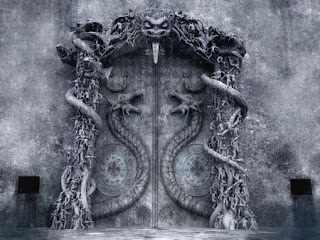Birla Mandir, Jaipur also known as Laxmi Narayan Temple is a Hindu temple in Jaipur. The grand temple is located on an elevated ground at the base of Moti Dungari hill in Rajasthan. Temple looks stunning, when it is brightly lit in the night. The temple was built during the year 1988, by Birla Group of Industries. The Temple is dedicated to Lord Vishnu (Narayan), the preserver and his consort Lakshmi, the Goddess of wealth. Birla Mandir is constructed using the finest quality of white marble. The beautiful white marble temple mesmerizes the onlookers, when it glows at night. Stained glass windows depict the scenes from Hindu scriptures. Ganesh the protector of households, is above the lintel, and the fine quality of marble is evident when you enter the temple and look back at the entrance way. The images of Lakshmi and Narayan attract the attention, being made out from one piece of marble. The Laxmi Narayan Mandir is a modern architectural marvel, surrounded by lush green gardens. The fascinating exteriors of the temple are carved splendidly with beautiful sculptures based on mythological themes, while the interiors have a large marble panel portraying mythological events.
source of information; https://en.wikipedia.org/wiki/Birla_Mandir,_Jaipur
source of information; https://en.wikipedia.org/wiki/Birla_Mandir,_Jaipur









































